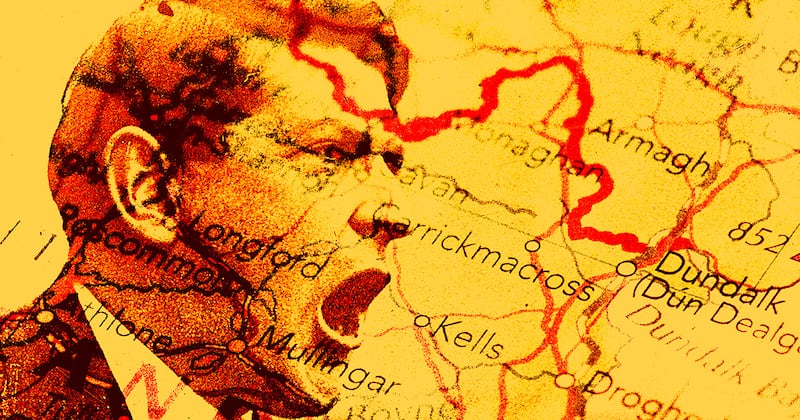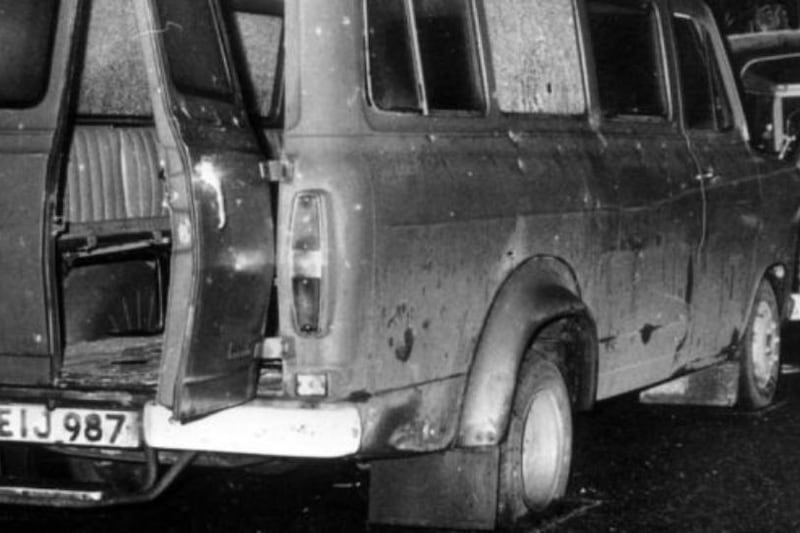“When I was going to London Mr de Valera said to me, ‘There may have to be scapegoats’ . . . [Michael] Collins and myself were willing to be scapegoats.”
So Arthur Griffith told Dáil Éireann in April 1922. Within four months, as civil war raged across Ireland, he and Collins were dead.
Griffith was chairman of the small Irish team sent to negotiate a treaty with Britain in 1921. That treaty ended the Irish War of Independence and created the State. President Éamon de Valera had set up the talks but he then refused to attend them. The Irish in London faced British prime minister Lloyd George and senior members of a Tory-Liberal coalition.

Republicans greatly respected Arthur Griffith, founder of Sinn Féin and a friend of those executed in 1916. He was long the impoverished editor of small but influential weekly papers, and during 1919-20 became acting-president of the revolutionary Dáil while de Valera was in America for most of the War of Independence.
In October 1921 Dáil Éireann gave Griffith and his team full powers to negotiate in London – subject to the Dáil approving any agreement. “Griffith, get the best price you can for the cow,” de Valera was said to have told him before he left.
Griffith bore the brunt of the work, with Collins in mid-November describing him as “a good man. Only, I fear, much the worse for the strain of a life spent in toil and trouble. I reminded him of how, when I was young, I thought of him as Ireland.” Griffith’s wife Maud (he called her “Mollie”) joined him as talks dragged on, and saw his hair turning white.
Griffith dropped dead in Dublin the following August. Harry Boland, who fought against Griffith's pro-Treaty side during the Civil War and died of gunshot wounds just 11 days before Griffith, reportedly said of him to a friend, "Damn it, Pat! Hasn't he made us all?"
Far from agreeing the present Irish Border, Minister for Foreign Affairs Griffith and Minister for Finance Collins expected Tyrone and Fermanagh among other areas to pass South into the new State under a provision in the treaty for a boundary commission intended to respect local people’s wishes.
A border already existed when the team left Dublin. Northern Ireland had then its own working parliament under the UK Government of Ireland Act 1920. The creation of a 32-county republic was not on the table.
The exact final border still had to be agreed. Murderous sectarian clashes were erupting in Ulster, and continuing uncertainty exacerbated them. The Irish Boundary Commission was modelled on a provision in the Treaty of Versailles then being used to fix the border between Germany and Poland.
Dubious claims that Griffith was “trapped” by “Welsh wizard” Lloyd George into secretly assenting to a bad Border deal have been repeated uncritically. They arise from Frank Pakenham’s 1935 book Peace by Ordeal. Pakenham (Lord Longford) relied on a conversation with Austen Chamberlain, the Tory party leader in 1921 and one of the British negotiators. Yet Chamberlain would not show Pakenham his notes.
What happened just hours before the treaty was signed on December 6th also created confusion, then and since. Angry British ministers threatened immediate all-out war in Ireland. Lloyd George waved documents in the air and produced what he described as a “letter” – to the contents of which he claimed Griffith had agreed at a lunch on November 12th.
Notes by some negotiators present refer to Griffith then acknowledging that he had given Lloyd George an “undertaking” but do not define what that was, and are capable of various interpretations. Reports from Griffith to de Valera indicate that what he assented to in November was simply keeping Britain’s proposal secret until Ulster unionists replied.
The proposal for a boundary commission in the “letter” produced by Lloyd George on December 5th had certainly not been created as part of a cunning ambush of Griffith on November 13th – as Pakenham thought. It was written days earlier and discussed by Griffith and Lloyd George on November 12th. Griffith immediately briefed de Valera that he had refused to agree to it. He also saw a typed copy of the proposal on November 13th.
Pakenham’s theory framed Griffith as a dupe if not a knave and has misled later historians. If Lloyd George produced the “letter” to cause disarray in Irish ranks it worked, but lively evidence on the Irish side tells a different story about Griffith’s tactics, as can be seen below.
The boundary commission proposal was first made on November 8th when British cabinet secretary Thomas Jones met Griffith and Collins. Griffith that day reported to de Valera that the British were proposing a boundary commission to delimit Ulster – which "would give us most of Tyrone, Fermanagh, and part of Armagh, Down, etc. We did not give any definite opinion on the matter. It is their look-out for the moment. Jones is to see us again tomorrow."
Next day Griffith returned with another member of his team, Éamonn Duggan TD. Griffith told Jones, “It is not our proposal, but if the prime minister cares to make it we would not make his position impossible. We cannot give him a pledge but we will not turn him down on it. We are not going to queer his pitch. We would prefer a plebiscite, but in essentials a Boundary Commission is very much the same. It would have to be not for Tyrone and Fermanagh only but for the six counties.”
Jones noted in his diary that Lloyd George said to him later that same day that the boundary commission would be for the nine counties of Ulster: "I told him that I certainly had not made that clear. That I had spoken of six counties." It was a vital distinction. Collins and Griffith assumed throughout that a delimiting boundary commission would limit Northern Ireland to a smaller territory consistent with the wishes of people living there – but did not reckon with unionist districts in Cavan, Monaghan and Donegal opting into Northern Ireland, as Lloyd George envisaged.
That same evening of November 9th, 1921, Griffith wrote to de Valera: "Lloyd George proposes . . . that a boundary commission to delimit the six-county area be established so as to give us the districts in which we are a majority." Jones "asked us did we think the 'Ulstermen' would accept this proposal. We said we were quite sure they would not. He said that was his own opinion. The move was a tactical one to deprive 'Ulster' of support in England by showing it was utterly unreasonable in insisting to coerce areas that wished to get out. He asked us would we stand behind such a proposal. We said that it would be their proposal – not ours, and we would not, therefore, be bound by it but we realised the value as a tactical manoeuvre and if Lloyd George made it we would not queer his position. He was satisfied with this."
Then on November 12th Lloyd George himself met Griffith over lunch. They discussed a letter that Lloyd George intended sending to Northern Ireland's prime minister James Craig in reply to the unionists' refusal to join an all-Ireland state under any circumstances. The letter as drafted included the full proposal in the document that Lloyd George was to flourish at the talks on December 5th, when he reportedly claimed that "Arthur Griffith had agreed to its contents" on November 12th and had "undertaken not to let him down".
Yet on November 12th itself Griffith sent de Valera a vivid and plausible account of events that was consistent with Griffith’s reserved way of conducting negotiations. He began: “Lloyd George and his colleagues are sending a further reply to the Ulstermen . . . offering to create an All-Ireland Parliament, Ulster to have the right to vote itself out within 12 months, but if it does a Boundary Commission to be set up to delimit the area . . . ”.
Griffith then informed de Valera how he carefully reacted to this: “I told him it was his proposal, not ours. He agreed, but he said that when they were fighting next Thursday with the Die-hards [MPs strongly against concessions to Irish republicans] and ‘Ulster’ in front, they were lost if we cut the ground away behind them by repudiating the proposal. I said we would not do that, if he meant that he thought we would come out in public decrying it. It was his own proposal. If the Ulstermen accepted it, we would have to discuss it with him in the privacy of the Conference.”
Griffith assured de Valera that he told Lloyd George, “I could not guarantee its acceptance, as, of course, my colleagues knew nothing of it yet. But I would guarantee that while he was fighting the ‘Ulster’ crowd we would not help them by repudiating him. This satisfied him. They are to send this letter on Monday.” Griffith had just assented to giving Lloyd George time to send the letter and get a reply.
However, when Lloyd George wrote to Craig on the Monday he omitted the proposal as discussed with Griffith. But the British then included amended versions of the boundary commission proposal in drafts of the treaty, with de Valera and the cabinet discussing the final version in Dublin before its incorporation in the agreement for a treaty that all the negotiators signed in London on December 6th – believing it to be the best deal available. A majority of the Irish cabinet and of Dáil Éireann subsequently voted to accept it too.
The boundary commission was not a divisive issue in 1921-2. But the cabinet should have been more careful. It would have been better had all sides agreed clearer terms for it before the treaty was signed. On December 5th Griffith was still seeking Craig’s response.
In the end, the Civil War fatally delayed the establishment of the boundary commission. By the time it was set up Griffith and Collins were dead and circumstances had changed. The possibility that it might allow unionist communities in the Free State to join Northern Ireland alarmed Dublin. The Border has stayed as created in 1920.
Prof Colum Kenny DCU is author of The Enigma of Arthur Griffith: “Father of Us All” (Merrion Press, 2020).













